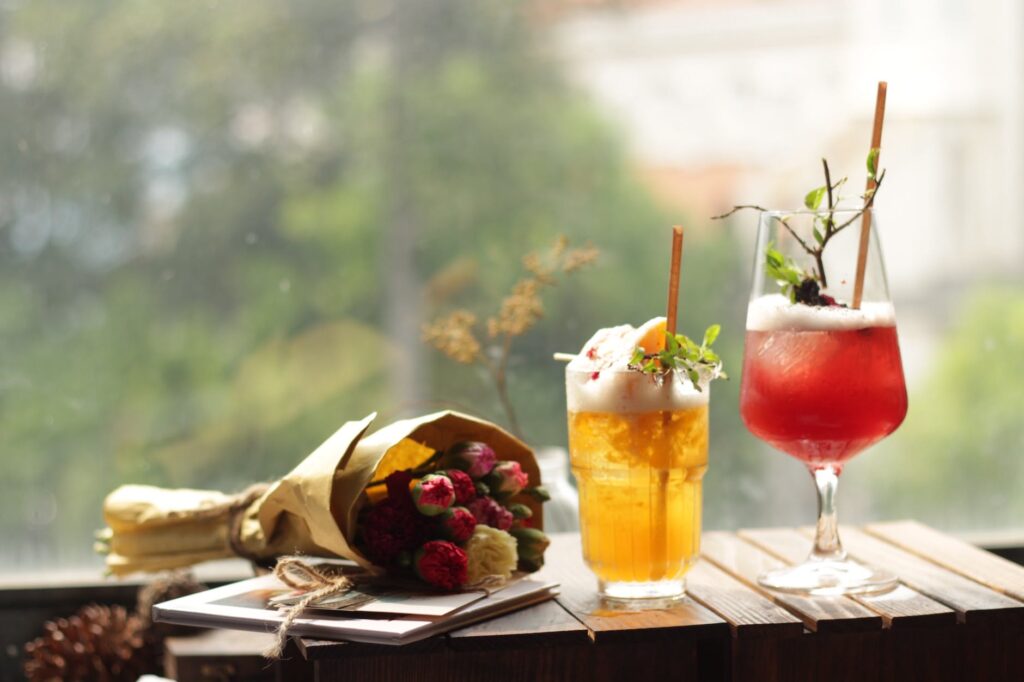In recent years, there has been a noticeable shift towards health and wellness, along with a desire for inclusive social experiences. This shift has resulted in an increased demand for high-quality and exciting non alcoholic beverages. The hospitality industry is recognizing this trend and looking to maximize its revenue-generating potential. Here are some key points to consider:

- Don’t oversimplify non alcoholic beverages: In the past, non-alcoholic options were often simple combinations of juices. However, with a growing number of people seeking to drink less alcohol, providing a variety of intriguing and nuanced beverages is essential. Non-drinkers are looking for non-alcoholic cocktails that offer the complexity and sophistication of their alcoholic counterparts.
- Utilize non-alcoholic spirits: Non-alcoholic spirits have significantly evolved in terms of flavor and complexity. There are now high-quality non-alcoholic spirits available on the market that can rival their alcoholic counterparts in taste. These spirits can be used as modifiers in alcoholic cocktails, adding another dimension to the flavor profile while reducing the alcohol content. Some bars even include the alcohol by volume (ABV) on their menus to help guests make informed choices.
- Carefully select and advertise your options: Not all non-alcoholic spirits are created equal, so consulting an expert mixologist can help you choose the right ones and avoid waste. Tailor your menu to your audience’s preferences and include options that are not widely available to pique curiosity. Unique and visually appealing options can generate buzz on social media and attract customers.
- Embrace the global focus on health and wellness: A significant portion of consumers choose non-alcoholic options for health reasons. Incorporating healthy ingredients such as fresh fruit juices, herbs, teas, and botanical infusions can attract health-conscious customers, calorie-conscious individuals, and those with specific dietary requirements. Partnering with local brands and using locally sourced ingredients can provide guests with a unique experience.
- Train your staff: Given the increasing complexity and demands of customers, proper staff training is crucial. Your staff should be capable of mixing the drinks on your menu and well-versed in non-alcoholic offerings. Knowledgeable staff can guide guests through the options available on non alcoholic beverages, ensuring they feel confident in their choice.
- Create experiences around non alcoholic beverages: Non alcoholic beverages can be paired excellently with various dishes, similar to wine pairings. Offering non alcoholic beverage pairings with meals can elevate the experience for non-drinkers. In fact, some bars and restaurants across the US solely focus on providing unique non-alcoholic experiences. This trend is expected to continue, particularly among Gen Z customers who prioritize experiences over drinking. Hotels, especially those with multiple outlets, may consider dedicating one space to a no-alcohol concept.
Some non alcoholic beverages getting the spotlights
The popularity of non-alcoholic beverages can vary depending on region and individual preferences. However, here are some popular non-alcoholic beverages that have gained popularity in recent years:
- Non-Alcoholic Spirits: There has been a surge in the availability of non-alcoholic spirits that offer complex flavors and can be used as substitutes for their alcoholic counterparts, such as- Seedlip, Ritual Zero Proof, Lyre’s, and Arkay.
- Crafted Sodas: Artisanal and craft sodas, made with natural flavors and botanicals, have become increasingly popular. These sodas offer unique and sophisticated flavors beyond the typical mainstream options.
- Cold Brew Coffee: Cold brew coffee, made by steeping coffee grounds in cold water for an extended period, has gained popularity for its smooth and less acidic taste compared to traditional hot brewed coffee. It’s often served over ice and can be customized with various flavors and additions.
- Kombucha: Kombucha is a fermented tea beverage known for its probiotic properties and unique tangy taste. It comes in a variety of flavors and has gained popularity as a healthier alternative to sugary soft drinks.
- Herbal Infusions and Tisanes: Herbal infusions and tisanes made from herbs, flowers, and botanicals are popular for their soothing and aromatic qualities. Examples include chamomile tea, mint infusions, and lavender lemonade.
We should understand, the rise of non-drinking consumers presents a significant opportunity for the hospitality industry. Prioritizing diverse, flavorful, and memorable non-alcoholic options, along with emphasizing experiences and health-forward ingredients, is key to meeting the growing demand. By implementing these strategies and ensuring well-trained staff, an appealing offering of non alcoholic beverages can yield a high return on investment and give your F&B program a competitive edge.
